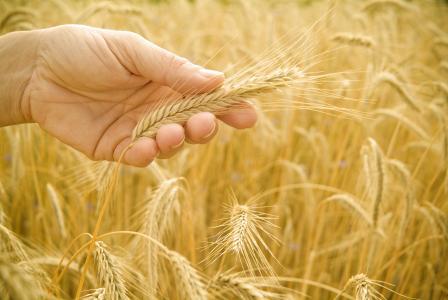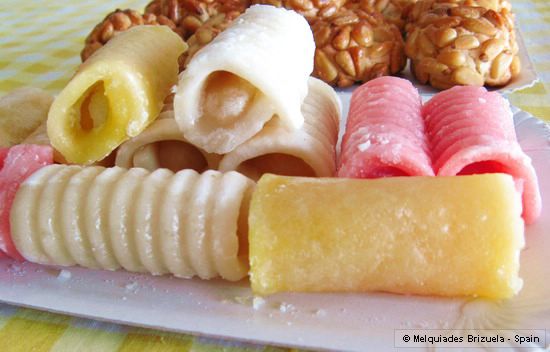 All Saints Day in Spain (Todos Los Santos) takes place on November 1st. It is a very important national public holiday when people from all over the country return to their town or village to lay flowers on the graves of deceased relatives. There are few religious days that mean quite so much to the ordinary people of Spain as this solemn festival.
All Saints Day in Spain (Todos Los Santos) takes place on November 1st. It is a very important national public holiday when people from all over the country return to their town or village to lay flowers on the graves of deceased relatives. There are few religious days that mean quite so much to the ordinary people of Spain as this solemn festival.
 All Saints Day in Spain (Todos Los Santos) takes place on November 1st. It is a very important national public holiday when people from all over the country return to their town or village to lay flowers on the graves of deceased relatives. There are few religious days that mean quite so much to the ordinary people of Spain as this solemn festival.
All Saints Day in Spain (Todos Los Santos) takes place on November 1st. It is a very important national public holiday when people from all over the country return to their town or village to lay flowers on the graves of deceased relatives. There are few religious days that mean quite so much to the ordinary people of Spain as this solemn festival.
On November 1st each year, the Feast of All of the Saints is held and this particular public holiday centres around remembering dead family members. Most people will visit the graves of relatives and decorate them with elaborate floral displays. Roads around cemeteries will be crammed with traffic, flower sellers line the streets and, in many places, additional public transport services are organised. Although this might sound over-commercialised and hectic it is actually, for most people, a day of high emotions. The Eucharist, or Mass, will often be performed in the cemetery several times during the day.
 In common with many festivals throughout the country there are a number of special dishes which are associated with All Saints’ Day. Chief amongst these is the tradition of eating roasted chestnuts, castañas, alongside small almond cakes, pannellets. The chestnut element of the tradition comes from the legend of Maria La Castañada, a chestnut seller, about whom there are many stories. The almond cakes apparently are reminders of the days when home made cakes and offerings were left with the bodies of the dead. At this time of the year you will also see in the shops huesos de santo – the saint’s bones – which have marzipan, eggs and sugar syrup and buñuelos de viento – puffs of wind – which are doughnuts liberally sprinkled with cinnamon and sugar. In Catalonia in particular it is also quite usual to eat sweet potatoes, el boniato.
In common with many festivals throughout the country there are a number of special dishes which are associated with All Saints’ Day. Chief amongst these is the tradition of eating roasted chestnuts, castañas, alongside small almond cakes, pannellets. The chestnut element of the tradition comes from the legend of Maria La Castañada, a chestnut seller, about whom there are many stories. The almond cakes apparently are reminders of the days when home made cakes and offerings were left with the bodies of the dead. At this time of the year you will also see in the shops huesos de santo – the saint’s bones – which have marzipan, eggs and sugar syrup and buñuelos de viento – puffs of wind – which are doughnuts liberally sprinkled with cinnamon and sugar. In Catalonia in particular it is also quite usual to eat sweet potatoes, el boniato. Back in the 10th century All Saints’ Day was celebrated on May 13th but Popes Gregory III and IV moved it to its present date because they wanted to neutralise the pagan festival, the forerunner of Halloween, that was held at that time of the year. The ancient Gaels believed that this time of the year, sometimes thought of as the Celtic New Year, was when the boundaries between the living and the dead disappeared so the Church linked this with All Saints’ Day. Initially, the time was a period of fasting as well as the holding of vigils. What began as a time of remembrance of the Christian martyrs evolved into the present custom of remembering all the dead.
Back in the 10th century All Saints’ Day was celebrated on May 13th but Popes Gregory III and IV moved it to its present date because they wanted to neutralise the pagan festival, the forerunner of Halloween, that was held at that time of the year. The ancient Gaels believed that this time of the year, sometimes thought of as the Celtic New Year, was when the boundaries between the living and the dead disappeared so the Church linked this with All Saints’ Day. Initially, the time was a period of fasting as well as the holding of vigils. What began as a time of remembrance of the Christian martyrs evolved into the present custom of remembering all the dead.
One of the All Saints’ traditions across Spain is the performing of the play Don Juan Tenorio, written by José Zorrilla. The final act of this portrayal of Don Juan’s choice between salvation or hell is set in a cemetery with the legendary lover lamenting over his betrayal of his dead lover.

No hay comentarios:
Publicar un comentario